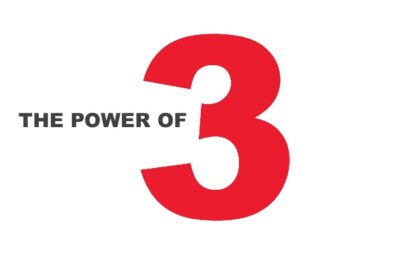
Last Saturday was at a get together and ended up meeting lot of old friends and classmates some of them after 30 odd years. As we laughed and rekindled old relations it put everyone in a very happy state of mind. As we reintroduced ourselves and talked about our lives since we had left college, even people whom we had requested, cajoled and pushed to join in and those who felt bored during the start of the function got into a relaxed and happy state.
So why is that even people who felt initially bored and even not so excited at various points of time ended up being very happy and satisfied as the function concluded?
As per the research done by Dr Daniel Kahneman a Noble prize-winning Israeli psychologist this state which he has explained through the peak end theory the human brain measured an overall experience by how it ended and the peak moments during the experience. We all very often give a lot of importance to the start of a presentation in talk and presentations but as per his findings the human brain provides lesser importance to the experience at the start but very high importance to how the same ended.
Since am a great sports follower am sure people like me will all recollect the Indian cricket teams win in the 2011 cricket world cup. But if we try to recollect things about the final today am sure the things that come to mind are that of Dhoni hosting the huge six to close the match and then maybe the prize distribution ceremonies and so on. Hardly anyone of us will recollect the gritty knock of Gautam Gambir who scored a blistering 97 and was really the architect of that victory. A simple reflection of the peak end theory at work.
Some of the everyday things that we could use in our daily interactions to ensure that every interaction is made memorable are as listed below.
- Building representativeness
Have you ever felt we are concluding how another person will respond or behave based on our own experience and feelings. However hard we try the response of our thoughts would initially move in this direction. This is because of the bias that our brain has towards representativeness. Because of the same we assume that a specific example is an indicator for a larger sample. This also explains why during even the toughest of negotiations people get comfortable when we use techniques that acknowledge the other persons feelings and responses, and they tend to open up more after the same. Some of these techniques have covered in earlier articles links to which are also shown below.
So next time you give an example please keep in mind that the brain will immediately try to build a pattern out if the example by building it as a reference.
2. Adding anecdotes
Anecdotes are short amusing stories about popular and famous personalities which builds a connect with the point that you are trying to make. Our brains get further connected to anecdotes which also has struggles and then leads to success. While trying to drive across a point it helps to start and end the pitch with anecdotes which justify the point that you are trying to make.
3. Add culture references
In each society we have various culture references which are already linked up in our minds. These could be colors, symbols etc. Bringing in such references helps getting your message across more effectively to the listeners brains. This also explains why we have certain colors like green, red, yellow, and white in almost every product packaging.
4. Build Minimalistic communication!
Am sure we all get bored or lose interest when the communication gets dragged. The brain tends to lose interest on the points being discussed after a certain period. So, it helps if we can keep the communication flow in a way to be minimalistic while communicating what we had intended to do.
5. The magical rule of 3
The human brain loves communicating in groups of three as it is the smallest number using which it can form a pattern for easier recollection. If the groups are lesser than three there is no pattern and if the groups are more than three, then the brain needs to put in more effort and as we saw earlier the brain tries to be minimalistic under all situations. So, keep this factor in mind under all regular situations like
- Building a Summary slide or creating a problem statement or why certain change is required.
- The way you present yourself in an Interview.
- The way you build your Resume and so on.
So next time you plan a critical presentation or are planning for enhancing customer experience please ensure the peak end theory is put to good use. If you design the best shopping experience for your customers in the supermarket with the widest range of products at the best prizes but if the customers, then must queue up for a very long time to complete the billing it might not lead to the desired customer experience that you had really wanted to achieve. Similarly, however good your presentation is ensured if you close the same on a very high note for people to recollect and remember the same. The same holds true for all interactions that we have in our everyday life.
To further enhance the peak end theory, use the magical rule of three to help better retention and involvement by all participants. To continue getting information on how to enhance the power of three in our day-to-day interactions subscribe to my new LinkedIn newsletter Rejo’s Biz Bytes and visit my website www.rejofrancis.com.



